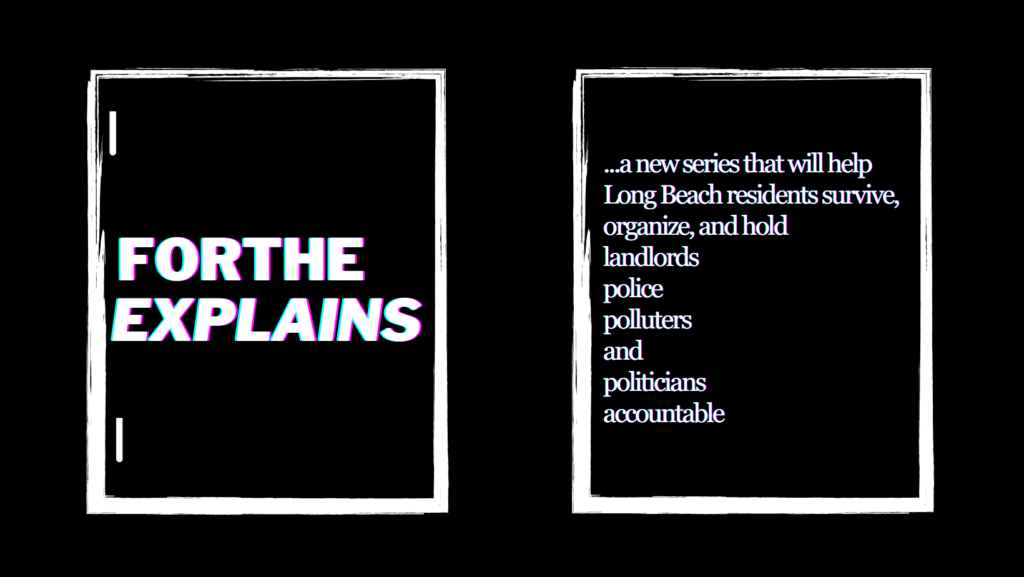From Narcan to Fentanyl Testing Strips: Where to Access Harm Reduction Resources in Long Beach
8 minute readHumans always have and always will use drugs—so it’s essential to be informed on how to reduce harm when using.
Harm reduction is a philosophy and public health approach that focuses on minimizing the negative consequences of drug use, rather than trying to criminalize or eradicate drugs altogether. The harm reduction movement in the U.S. was created by drug users during the AIDS crisis in the 1980s to educate injection drug users on the dangers of sharing needles and to provide access to clean supplies.
Today, needle exchange programs are associated with an estimated 50% reduction in HIV and hepatitis C infections.
Maia Szalavitz, author of Unbroken Brain: A Revolutionary New Way of Understanding Addiction, sums up harm reduction as aiming “to stop people from getting hurt, rather than stop them from getting high.”
The opposite philosophy of pushing drug abstinence and criminalizing drug users has never worked to reduce drug use or addiction. Just like promoting sex abstinence—and withholding education and resources, like condoms—doesn’t prevent teen pregnancies and sexually-transmitted diseases. Instead, the trillion-dollar War on Drugs has been an utter failure, leading to a racist mass incarceration crisis while drug overdoses have soared to record highs.
Synthetic opioids, primarily fentanyl, are responsible for two-thirds of the over 107,000 overdose deaths in the U.S., according to the Centers for Disease Control and Prevention. Fentanyl is a synthetic opioid that is 50 times more potent than heroin with a lethal dose of only 2 milligrams. From 2016 to 2021, recorded fentanyl overdoses in Los Angeles County increased by 1,280%.
According to a city study, from July to November 2019, opioids were responsible for 40% of the 187 reported overdoses. The following year, as the pandemic set in, accidental overdose deaths spiked in Long Beach. Overdose deaths have also been rising among the city’s homeless population.
One of the best harm reduction tools against opioid overdose is naloxone, also known by its brand name Narcan. This FDA-approved, lifesaving medication reverses opioid overdoses in two to three minutes. The state approved it for over-the-counter use in 2015.
There are many other forms of harm reduction, such as wound care, needle exchanges, and drug supply testing. There are also overdose prevention centers (OPC) like the two that have opened in New York City. At these centers, people can use drugs under trained supervision which allows for a rapid response in the event of an overdose. Though OPCs remain illegal in California, the facilities in NYC have reversed at least 1,000 overdoses since opening in 2021. In fact, there has never been a fatal overdose at an OPC anywhere in the world.
While OPCs might not be a reality in California yet—the governor vetoed a bill last year that would have allowed select cities to pilot them—you should know about the other types of harm reduction resources that are accessible here in Long Beach.
Naloxone/Narcan
Bienestar Human Services in Long Beach provides free naloxone kits at their Pacific Avenue location (inside the Planned Parenthood building).
The Asian American Drug Abuse Program (AADAP) also distributes naloxone at its three mobile sites in North, Central, and West Long Beach on Wednesdays. For the specific locations of the mobile sites, which you can find in the map above.
You can also get naloxone through the mail. Both NEXT Harm Reduction and End Overdose will send California residents a free Narcan kit. You must take a quick online course for both. End Overdose will charge $8 for shipping while NEXT is totally free.
Both Medi-Cal and Medicare cover the cost of Naloxone with a prescription. It can also be purchased over-the-counter for about $40 at pharmacies like CVS and Ralphs. To see if a store near you carries Naloxone, visit the Los Angeles County Department of Public Health website and refer to its guides in English and Spanish on how to properly use Naloxone.
Tomisin Oluwole
Dine with Me, 2022
Acrylic on canvas
36 x 24 inches
Click here to check out our interview with Tomisin Oluwole, a literary and visual artist based in Long Beach.

Instead of gunking up our site with ads, we use this space to display and promote the work of local artists.
Needle Exchange Programs
Three organizations run needle exchange programs in Long Beach: Bienestar, Community Health Project LA, and the Asian American Drug Abuse Program. Used needles can be disposed of safely and clean needles can be obtained at these sites.
Bienestar’s Harm Reduction Center runs its Syringe Service Program (SSP) from 10 a.m. to 5 p.m. Tuesday and Thursday at Bienestar’s Pacific Avenue location. On Mondays, Bienestar’s mobile SSP is at the Coastal Recovery Center in Wilmington from 10 a.m. to 12 p.m.
The Harm Reduction Center also offers overdose prevention and response training, destigmatizing drug use and empowering marginalized communities with access to healthcare. Bienestar shares educational resources to advocate for safer drug usage, while also using its SSP to connect people with HIV and Hep C testing, STI testing, drug detoxification treatment services, mental health therapy—just to name a few of the provided health services.
The AADAP also does needle exchanges at its Wednesday mobile sites. The organization also provides individual and group counseling to people of all backgrounds at its outpatient center, which is open from 9 a.m. to 5 p.m. Monday through Friday.
Community Health Project LA’s needle exchange program is from 11 a.m. to 1:30 p.m. every Monday at the Long Beach Multi-Service Center.
Test Your Drugs for Fentynal or Xylazine
Oftentimes a person is unaware that their recreational drug, whether it be ecstasy, cocaine, meth, or heroin, is contaminated with fentanyl or xylazine—a dangerous non-opioid sedative. Testing your drugs before using reduces that risk. You can get free test strips from any AADAP or Bienestar site, as well as the APLA Health Center at St. Mary’s Medical Center. The city’s harm reduction website also lists various online vendors from which you can purchase test strips.
If testing MDMA, ecstasy, and meth, use one teaspoon of water for every 10 milligrams of the substance being tested. For all other drugs, use half a teaspoon. After placing the testing strip wavy side down in the water for 15 seconds, remove it from the water, and let it lay flat for two minutes. If there is one line, the drug contains fentanyl. The LA County Health Department has easy-to-follow graphics with instructions on how to use fentanyl strips available in English and Spanish
Use Safe Practices, Educate Yourself, and Plan Ahead
If you are using drugs , the California Department of Public Health (CDPH) advises not using alone and to take turns using to prevent the risk of overdosing. It’s not guaranteed that your supply is safe, so be vigilant: test your drugs, have Narcan on hand, don’t use alone, start with low doses, .do not mix substances, and know the signs of an overdose:
It’s important to have a plan before using substances and to know the signs of someone overdosing—small pupils, lack of consciousness, difficulty breathing, limpness, cold and clammy skin for opioid overdoses; chest pain, rapid heartbeat, increased temperature and kidney issues for methamphetamine. If someone overdoses on opioids, use Narcan and call 911.
Anyone can learn more about harm reduction from the comfort of their homes with a free three-course interactive, online training from the National Harm Reduction Coalition. The CDPH website shares a variety of training services, focusing on reducing harm within housing to using appropriate terminology when addressing addiction.
Talk and Reduce the Stigma
To counter the epidemic of overdoses, it’s essential for an informed and empathetic collective shift on how we as a culture treat people who use substances. Reduce the stigma by giving people space to talk about their experiences, asking questions, and listening.
If you, or someone you know is interested in drug treatment, there are treatment options and the Substance Abuse and Mental Health Services Administration offers confidential resources and referrals in English and Spanish 24 hours a day, 365 days a year. You can call anytime at 1-800-487-4889.



 kwbrownn@gmail.com
kwbrownn@gmail.com




